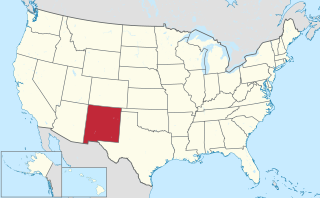
Sioux County is a county located in the U.S. state of Iowa. As of the 2020 census, the population was 35,872. Its county seat is Orange City. Its largest city is Sioux Center.

The 1974 United States Senate elections were held on November 5, with the 34 seats of Class 3 contested in regular elections. They occurred in the wake of the Watergate scandal, Richard M. Nixon's resignation from the presidency, and Gerald Ford's subsequent pardon of Nixon. Economic issues, specifically inflation and stagnation, were also a factor that contributed to Republican losses. As an immediate result of the November 1974 elections, Democrats made a net gain of three seats from the Republicans, as they defeated Republican incumbents in Colorado and Kentucky and picked up open seats in Florida and Vermont, while Republicans won the open seat in Nevada. Following the elections, at the beginning of the 94th U.S. Congress, the Democratic caucus controlled 60 seats, and the Republican caucus controlled 38 seats.

From the time of the Great Depression through the 1990s, the politics of West Virginia were largely dominated by the Democratic Party. In the 2000 presidential election, George W. Bush claimed a surprise victory over Al Gore, with 52% of the vote; he won West Virginia again in 2004, with 56% of the vote. West Virginia is now a heavily Republican state, with John McCain winning the state in 2008, Mitt Romney in 2012 and Donald Trump in 2016 and 2020.

The 2004 United States elections were held on Tuesday, November 2, 2004, during the early years of the war on terror and after the 2003 invasion of Iraq. Republican President George W. Bush won re-election and Republicans retained control of Congress.

This is the electoral history of Abraham Lincoln. Lincoln served one term in the United States House of Representatives from Illinois (1847–1849). He later served as the 16th president of the United States (1861–1865).

The Ohio general elections, 2010 were held on November 2, 2010 throughout Ohio. Primary elections took place on May 4, 2010.

The 1956 United States Senate election in Connecticut was held on November 6, 1956.

The 1982 Senate election in Maryland took place on November 2, 1982, simultaneously with other elections for seats in the U.S. Senate and House of Representatives in addition to gubernatorial openings. Incumbent Democratic Senator Paul Sarbanes won reelection to a second term in office. He defeated the Republican nominee, former Representative from Maryland's 5th district and Prince George's County Executive Lawrence Hogan.

The 1948 United States Senate election in Iowa took place on November 2, 1948. Incumbent Republican Senator George A. Wilson ran for re-election to a second term but was defeated by Democratic former Senator Guy Gillette.

The 1974 United States Senate election in Maryland was held on November 5, 1974, to elect one of Maryland's members to the United States Senate. Incumbent Republican U.S. Senator Charles Mathias Jr. won re-election to a second term defeating Baltimore City Councilwoman Barbara Mikulski, who won the Senate election 12 years later for this same seat upon Mathias' retirement.

The 1950 United States Senate election in Iowa took place on November 7, 1950. Incumbent Republican Senator Bourke B. Hickenlooper was re-elected to a second term in office over Democratic U.S. Undersecretary of Agriculture Albert J. Loveland.

The 1944 United States Senate election in Iowa took place on November 7, 1944. Incumbent Democratic Senator Guy M. Gillette ran for a second full term in office but was defeated by Republican Governor Bourke B. Hickenlooper.

Since New Mexico's admission to the Union in January 1912, it has participated in 28 United States presidential elections. In the 1912 presidential election, Theodore Roosevelt, the Progressive Party's nominee, received the highest vote share (17.1%) ever won by a third-party candidate in New Mexico. In the 1932 presidential election, Democrat Franklin D. Roosevelt won New Mexico, defeating Republican Herbert Hoover by 26.96%, which remains the largest ever margin of victory in the state's history. In the 2000 presidential election, Democrat Al Gore won New Mexico, defeating Republican George W. Bush by a margin of just 0.06%.

The 1928 United States Senate election in Connecticut was held on November 6, 1928. Incumbent Republican Senator George P. McLean was not a candidate for re-election. In his place, Republican State Senator Frederic C. Walcott won the seat against former U.S. Representative Augustine Lonergan.

The 1954 United States Senate election in Iowa took place on November 2, 1954. Incumbent Democratic Senator Guy Gillette ran for re-election but was defeated in an upset by Republican U.S. Representative Thomas E. Martin.

The 1962 United States Senate election in Iowa took place on November 6, 1962. Incumbent Republican Senator Bourke B. Hickenlooper was re-elected to a fourth term in office over Democrat E.B. Smith.

The 1968 United States Senate election in Iowa took place on November 5, 1968. Incumbent Republican U.S. Senator Bourke B. Hickenlooper retired. The open seat was won by Democratic Governor Harold E. Hughes, narrowly defeating Republican State Representative David M. Stanley.

The 1972 United States Senate election in South Dakota took place on November 7, 1972, concurrently with the U.S. presidential election as well as other elections to the United States Senate in other states as well as elections to the United States House of Representatives and various state and local elections.

The 1980 United States Senate election in Maryland took place on November 4, 1980.

The 1920 United States presidential election in Iowa took place on November 2, 1920, as part of the 1920 United States presidential election which was held throughout all contemporary 48 states. Voters chose 13 representatives, or electors to the Electoral College, who voted for president and vice president.
























